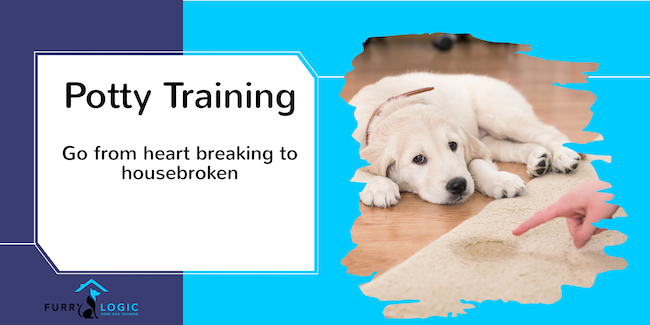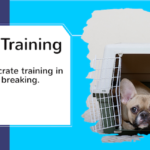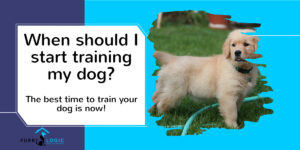You must never fault a puppy for toileting in the “wrong” place.
– Furry Logic Dog Training

With puppy potty training, timing is everything in preventing accidents
Potty Training a puppy is labour-intensive work. There’s no two ways about it. Unlike potty training a baby, we don’t put diapers on our pups. So to avoid accidents, it is our job to make sure the puppy gets to his toileting area on time. The general rule of thumb is a puppy should be able to hold its bladder for the number of months it is old plus one. That means a 2-month-old puppy may be able to hold its urine for 3 hours. Dedicated dog owners will even take their puppy out every 2 hours and seem to have great success with this intense schedule.
It is also extremely important to address circumstances that trigger elimination. These are:
- Before going to bed
- Waking up from a night’s sleep
- Waking up from a nap
- Drinking
- Eating
- After play
- After a walk
You can try managing nighttime peeing by removing access to water about 3 hours before bedtime but in the beginning be prepared to take puppy out regularly during the night.
Essential to potty training success is repeated elimination in the appropriate location. We like to say that a puppy is potty trained when you have 4 weeks of no accidents. Whenever you find an accident, the clock is set back to zero and you need to double down on your vigilance. If there is more than just you in the family, then share the responsibility. Make sure everyone knows the program and puppy is never left to wander on his own. If he can’t be supervised, he needs to be in his pen or crate.
How long does it take to potty train a puppy? Every dog is different. Size matters. Larger breeds grow bigger bladders faster. Plus, the more diligent you are the sooner it will happen.
You will notice as you observe your young canine that he has a little ritual before he eliminates. He will start sniffing the ground with great interest and will then begin to circle until he squats.
If he is in the wrong spot, perhaps he’s indoors, this is your signal to interrupt the behaviour and quickly get your puppy outside. You can make a loud clap with your hands and call him over to the exit or if he’s small enough, gently but swiftly scoop him up and carry him to the yard. The point of the clap is to break his concentration or distract him to give you enough time to rush him out.
Patience is the key to potty training. In the beginning a young puppy does not have control over the muscles that an adult dog has. You must never fault a puppy for toileting in the “wrong” place. If it happens, you only have yourself to blame. Dogs do not eliminate in the wrong place out of spite or to get revenge. It is improper training that leads to mistakes. So never punish a puppy or dog after the fact. Dogs live in the moment. The ideal teaching moment is when the dog’s body language is saying “I need to go to the bathroom.” Interrupt the behaviour and move him to the right location.
Dragging a dog back to the scene of the crime which is after the fact and raising your voice or, heaven forbid, putting his nose in it only makes him afraid of you. Say to yourself “It’s my fault, I left the gate open” or “I forgot to get him to pee before I brought him inside after our walk” or “I froze when I saw him squatting.” Promise to do better next time. Be kind to yourself and your dog. You are both learning.
Need help with puppy potty training at your house? Book a spot today.







No comment yet, add your voice below!